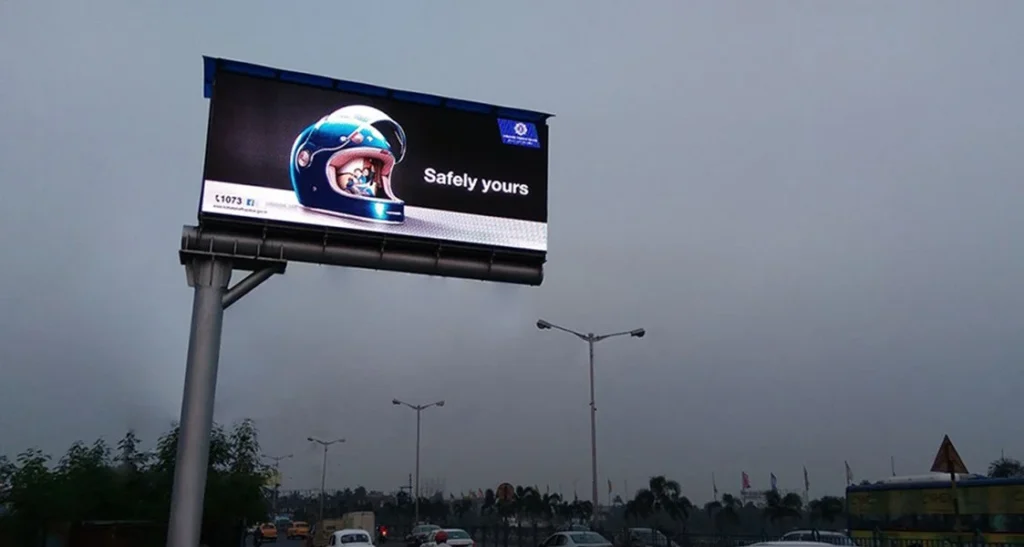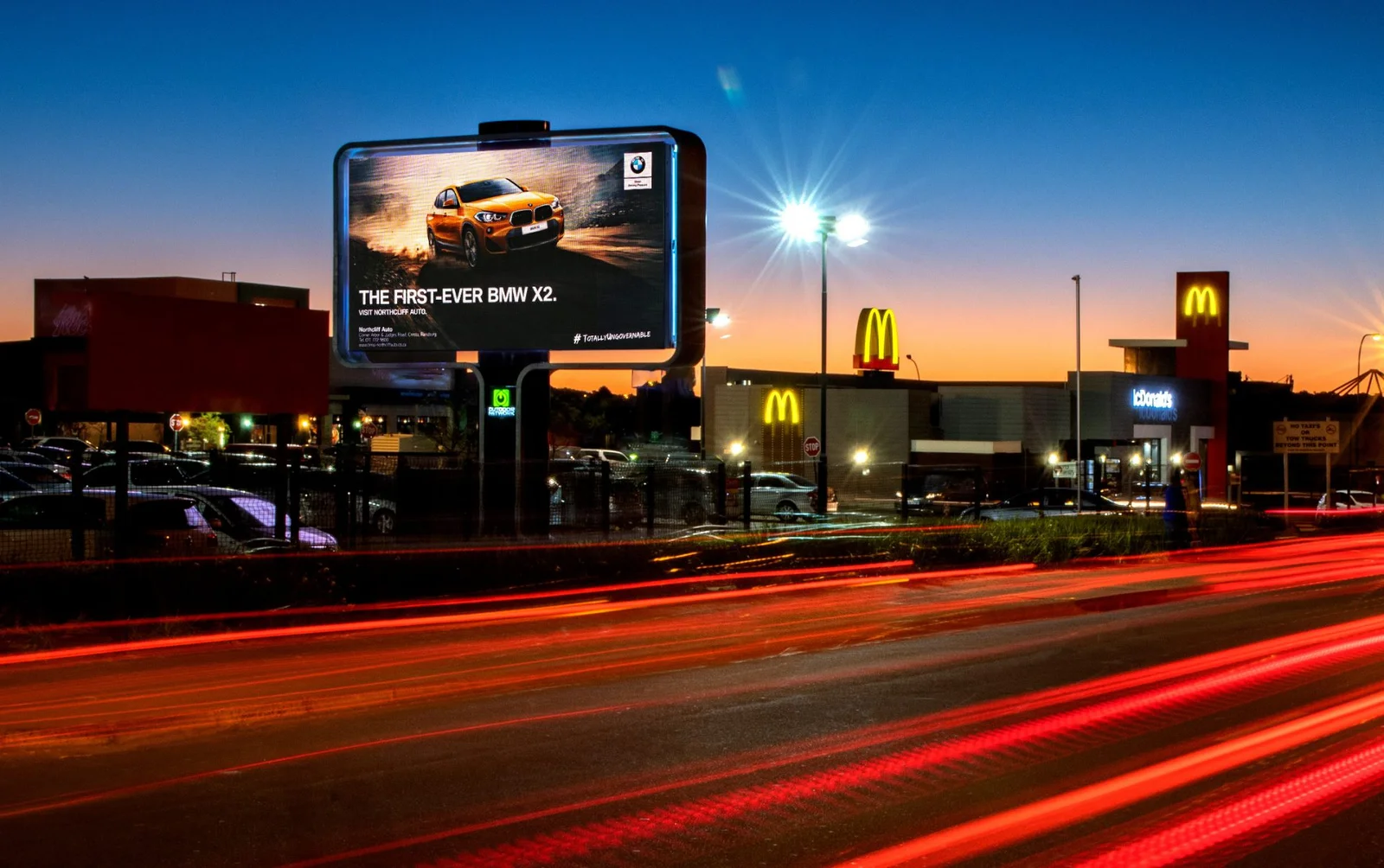Discover how clear design, bold imagery, and strategic placement can turn billboards into ROI-driven marketing powerhouses.

Why Billboards Still Dominate the Skyline of Advertising
Imagine this: you’re stuck in traffic on a busy city highway. Your favorite playlist hums in the background, but your eyes are wandering. Out of nowhere, a massive, brightly lit billboard appears—its message so crisp and image so bold that you instantly remember the brand long after you’ve reached home.
That’s the power of billboard advertising.
Despite the rise of digital screens and online ads, billboards remain one of the most effective ways to build brand awareness at scale. They’re impossible to “skip,” they dominate prime real estate in our cities, and—when designed well—they deliver measurable returns on investment.
But here’s the catch: not every billboard works. The difference between one that makes your audience stop and think and one that fades into the background comes down to three things: design, imagery, and placement.
In this blog, we’ll walk through the best practices for effective billboard advertising, breaking them into actionable steps. Whether you’re a business owner, a B2B marketer, or an advertiser aiming for big impact, this guide will help you get the most out of every square foot of your billboard space.
1. Clear and Powerful Design: Less Really Is More
Billboards give you five seconds or less to make an impression. Drivers are moving. Pedestrians are rushing. Commuters are distracted. This means you don’t have the luxury of long explanations or tiny fonts.
Golden Rules of Billboard Design:
- Minimal Text: Stick to 7 words or fewer. Think slogans, not paragraphs.
- Bold Fonts: Choose typefaces that are easy to read at a glance from a distance.
- High Contrast: Light text on dark backgrounds (or vice versa) makes your message pop.
💡 Example: A real estate company could use “Your Dream Home, 5 Minutes Away” with a clean house icon. Clear, sharp, and memorable.
Why It Works:
A simple design reduces cognitive load. Your audience should “get it” instantly, without slowing down or squinting. According to marketing studies, billboards with concise messaging enjoy up to 30% higher recall rates than cluttered designs.
2. Sharp, High-Impact Imagery: A Picture Speaks Louder Than a Thousand Words
If design is your framework, imagery is your magnet. A blurry or pixelated photo won’t just reduce impact—it’ll waste your investment.
Keys to Visual Success:
- Crisp, high-resolution graphics ensure your message remains legible, even from hundreds of feet away.
- Single focal point: Avoid clutter by highlighting one main image that drives the message home.
- Brand colors and consistency: When audiences see the same hues across billboards, digital ads, and packaging, recall shoots up.
💡 Storytelling Tip: Think of your billboard as a movie poster. The most successful posters don’t throw in every character or subplot—they focus on one powerful image that sets the mood.
ROI Impact:
Brands using high-resolution, emotionally engaging images report up to 40% better recall and engagement compared to those using generic stock visuals. That’s not just art—it’s science-backed marketing power.
3. Find the Perfect Place: Location is the Silent Hero
Billboard success isn’t just about what’s on it—it’s also where it stands.
Best Placement Practices:
- High-Traffic Zones: Busy highways, metro junctions, and commercial areas offer maximum exposure.
- Audience Alignment: Place your billboard where your target audience naturally goes—business parks for B2B campaigns, malls for consumer products, airports for travel brands.
- Visibility Angles: Ensure the board isn’t hidden by trees, buildings, or other signage.
💡 Example: A healthcare brand promoting a diagnostic center placed its billboard right outside a major hospital hub. The result? A 20% uptick in footfall within three months.
The ROI Story:
Studies show that strategically placed billboards can boost campaign effectiveness by up to 50%, simply because the right audience sees the message more often and at the right moment.

Beyond the Basics: Turning Billboards Into ROI Machines
Let’s get real: no brand invests in a billboard just for “art.” It’s always about outcomes. Here’s how effective billboard advertising directly contributes to ROI:
- Brand Recall at Scale – Billboards put your brand in front of thousands (sometimes millions) of eyes every day.
- Cross-Channel Support – When customers later see your ad online, they’re more likely to engage because the brand already feels familiar.
- Cost-Efficiency – With a single creative asset, you can achieve months of consistent exposure without recurring media spend.
- Trust Factor – There’s an unspoken credibility when a brand takes over a city skyline. It feels “established,” which helps win consumer confidence.
💡 Pro Insight: Pairing a billboard with a simple QR code can bridge offline and online. Commuters can scan on the go, leading them straight to your website or promotion.
Fun Storytelling Techniques for Billboard Success
- The “Peek-a-Boo” Technique: Use humor or curiosity—something that makes drivers think, “Wait, what was that?” and sparks conversation.
- Sequential Billboards: Imagine three boards in a row—Board 1 teases, Board 2 intrigues, Board 3 delivers the punchline. This works wonders on highways.
- Interactive Digital Billboards: AI-driven billboards can now change messaging based on weather, time of day, or even traffic conditions.
These aren’t gimmicks—they’re proven tactics to make your investment pay off.
Real-World Outcomes of Effective Billboard Advertising
- Retail Chains: A fashion retailer in a metro city used bold, minimalistic billboards during the festive season. Result: 25% increase in store visits in just two weeks.
- Educational Institutes: A coaching center placed boards near exam hubs. Enrollment jumped 15% in the following admissions cycle.
- Healthcare Brands: Diagnostic chains using health-focused billboards near hospitals recorded 20–30% higher appointment bookings.
Billboards aren’t just “big posters.” They’re silent salespeople working day and night.
FAQs on Billboard Advertising
Q1. How many words should a billboard have?
Ideally fewer than 7. The shorter, the better.
Q2. What is the ideal size for billboard text?
Large enough to be readable from at least 500 feet. Think bold, sans-serif fonts.
Q3. How do I choose the right location for my billboard?
Focus on high-traffic areas frequented by your target audience—city centers, highways, or shopping zones.
Q4. What makes billboard advertising cost-effective?
Unlike digital ads that need constant bidding, a billboard gives consistent exposure for weeks or months with a one-time spend.
Q5. Can small businesses benefit from billboards?
Absolutely. Strategic placement near local markets can drive community-level brand awareness affordably.
Q6. How do I measure ROI from billboard campaigns?
Track increases in footfall, website visits (via QR codes/short links), and sales during the campaign period.
Q7. Should I use humor in billboard ads?
Yes, if it aligns with your brand. Humor increases recall, but clarity should always come first.
Q8. What are the latest trends in billboard advertising?
AI-powered digital billboards, interactive QR integrations, and sequential storytelling billboards are leading the future.

